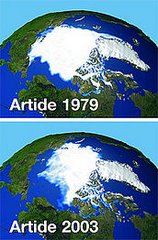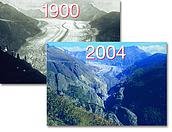London, UK - New data, released today by the Catlin Arctic Survey and WWF, provides further evidence of thinning Arctic Ocean sea ice, supporting the emerging thinking that the Ocean will be largely ice-free in summer within a decade.
The Catlin Arctic Survey, completed earlier this year, provides the latest ice thickness record, drawn from the only survey capturing surface measurements in the last winter and spring.
The data collected by manual drilling and observations on a 450 kilometre route across the northern part of the Beaufort Sea suggests the survey area is comprised almost exclusively of first year ice.

© Martin Hartley / WWF-Canon
This is a significant finding because the region has traditionally contained older, thicker multi-year ice.
The average thickness of the ice-floes measured 1.8 metres, a depth considered too thin to survive the next summer’s ice melt. The findings were analysed by the Polar Ocean Physics Group at the University of Cambridge, led by Professor Peter Wadhams, one of the world’s leading experts on sea ice cover in the North Pole region.
“With a larger part of the region now first year ice, it is clearly more vulnerable,” said Professor Wadhams. “The area is now more likely to become open water each summer, bringing forward the potential date when the summer sea ice will be completely gone.“
The Catlin Arctic Survey data supports the new consensus view, based on seasonal variation of ice extent and thickness, changes in temperatures, winds and especially ice composition, that the Arctic will be ice-free in summer within about 20 years, and that much of the decrease will be happening within 10 years.
“That means you’ll be able to treat the Arctic as if it were essentially an open sea in the summer and have transport across the Arctic Ocean.” According to the scientists who have studied the data, the technique used by the explorers to take measurements on the surface of the ice has the potential to help ice modellers to refine predictions about the future survival or decline of the ice.“This is the kind of scientific work we always wanted to support by getting to places in the Arctic which are otherwise nearly impossible to reach for research purposes,” said Expedition leader Pen Hadow. “It’s what modern exploration should be doing. Our on-the-ice techniques are helping scientists to understand better what is going on in this fragile ecosystem.”
The results of the analysis of more than 6000 measurements and observations collected by the survey in 73 days on the ice were unveiled today in London with warnings that rapid climate change in the Arctic risked the release of vast quantities of carbon stored in hydrates on the Arctic seabed or in frozen tundra soils.
“The arctic sea ice holds a central position in our Earth’s climate system. Take it out of the equation and we are left with a dramatically warmer world,” said Dr. Martin Sommerkorn from the WWF International Arctic Programme, which was a partner in the survey.
“Such a loss of Arctic sea ice cover has recently been assessed to set in motion powerful climate feedbacks which will have an impact far beyond the Arctic itself – self perpetuating cycles, amplifying and accelerating the consequences of global warming. This could lead to flooding affecting one quarter of the world’s population, substantial increases in greenhouse gas emissions from massive carbon pools, and extreme global weather changes."
“Today’s findings provide yet another urgent call for action to world leaders ahead of the UN climate summit in Copenhagen this December to rapidly and effectively curb global greenhouse gas emissions, with rich countries committing to reduce emissions by 40% by 2020.”
Source: © WWF PAGE (click here)





No comments:
Post a Comment